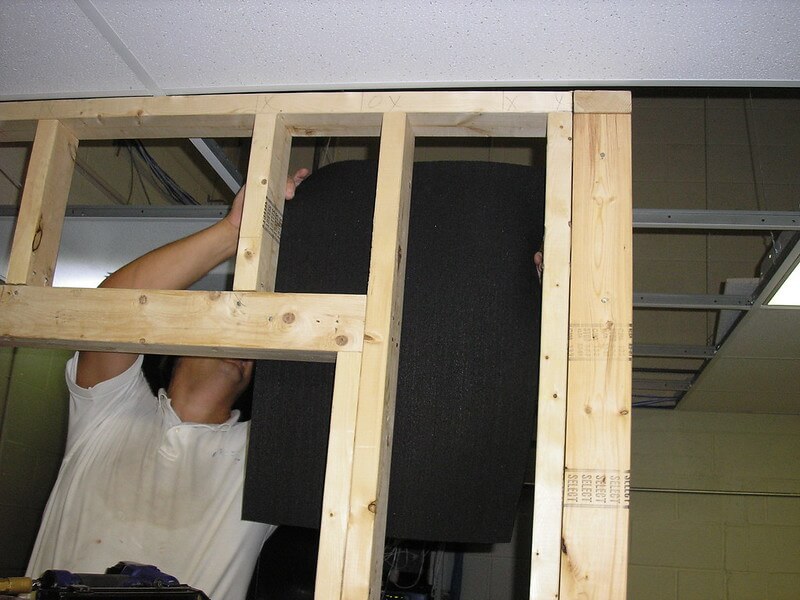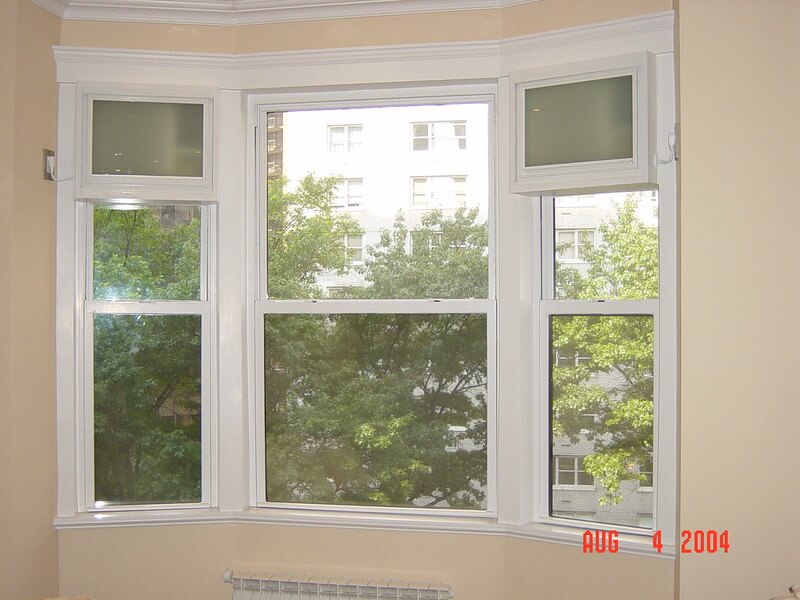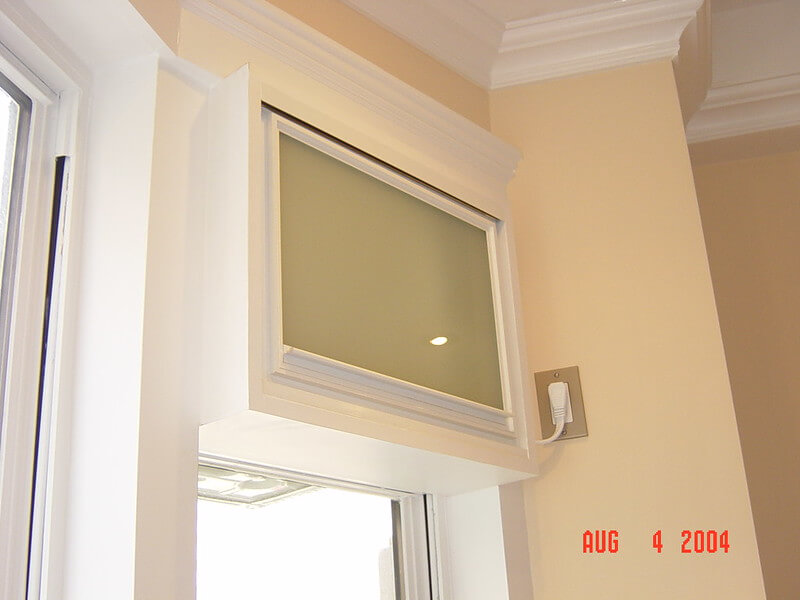The direct noise path for road traffic noise would be primarily through the windows and the window walls directly facing the road outside your home. However, sometimes rooms take a different shape than expected.
CASE STUDY
Jason lives in a 1½-storey modern detached house on a busy road. The sloping roof forms the walls and ceiling of the upstairs bedroom: one side has a sloping roof facing the busy road, which is the direct noise path along with the windows installed on this roof.
The house was perfect for Jason’s needs, but road noise was costing him sleep. He tried window barriers, acoustic curtains, acoustic foams, and white noise machines, to no avail: once a noise woke him up, he struggled to get back to sleep. He also found it difficult to concentrate while working from home.
He first updated the roof windows to new, acoustic-laminated versions with electric roller shutters to see what difference they would make before committing to any major renovation to his bedroom. As expected, the new units alone did not reduce noise much.
I could show Jason where the road noise was entering his main bedroom. We applied the four-step soundproofing method to his main bedroom. In Step 1, we addressed the leading cause of the problem by removing aluminum-coated rigid insulation channeling the noise from the road into the main bedroom.
In Step 2, we addressed the other direct noise paths. The roofing facing the road was treated with a ceiling system that took up 50mm space but keeps the roof ventilated and uses vapor barriers that exceed building regulation requirements.
In Step 3, we treated indirect noise from the ceiling on the other side of the room, a few hollow stud walls, and the bedroom floor, and in Step 4, we addressed the installation of fixtures and fittings (a built-in wardrobe, fitted furniture, air conditioning, finished flooring, and secondary glazing).
The reduction in noise after plastering was significantly more than the 50% reduction estimated before the project began: more like a 70% reduction. Adding soft furnishings, such as carpet, the bed, and other furniture, reduced the road noise further. After installing secondary glazing, Jason could look out the window and see the cars go past but not hear them.
Some people (and their pets) are disturbed by seasonal noises like fireworks. Upgrading windows and the window wall can help barrier that noises directly.
Soundproofing bedroom windows

Most bedroom window walls facing a road or noise that need to be soundproofed are either old 9-inch brick walls with no cavity or built using lightweight aerated blocks. A barn conversion along the main road may have many window walls as direct noise paths: gables at one or both ends facing traffic, or the main wall backing onto the road, which will need sound deadening material applied and then be isolated from the structure, with 50mm to 150mm space loss.
The issue with windows
Unlike walls, roofs, and ceilings that can reflect or absorb sound waves, the glass will allow high-frequency sounds and vibrations to pass through. This is why windows are generally the weakest point of insulation against environmental noise in the home.
Acoustic-laminated glazing

I get asked repeatedly whether to get triple glazing installed to reduce road noise. The acoustic-laminated glazing makes the difference, so long as the inner pane is laminated. By all means, get triple glazing if the inner pane of glass is laminated and the unit is designed to reduce noise. Double-glazed, laminated acoustic glass with the right air gaps between panes will outperform standard triple glazing.
The standard transmission class (STC) rating of the window should be in the region of 44 dB. We have always used Velux double-glazed roof windows with a laminated inner pane. It may seem obvious, but little improvement will be achieved if you upgrade to triple glazing with acoustic-laminated glass and still have large trickle vents installed on your new windows.
Ultimately it comes down to the quality of the window installation, the measuring-up of the windows, and the quality of the team installing the windows. So what should you look for?
What should you look for?
Most window installers will have the window manufactured more diminutive than the brickwork opening size by as much as 5–10mm all around the window. This allows the window installation teams to slot each new window in without worrying whether the window will fit and having to plane down the frame or chop out brickwork.
Some companies can do a whole house daily using spacers, silicone, expanding foam, and plastic beading to fill and hide the gaps. Unfortunately, this is terrible for noise, and you, the customer, will not get the laboratory figures for noise reduction quoted in the brochure for that window. The gaps let the noise in.
How do I know if I have gaps?
You might ask, ‘How do I know if I have gaps?’ You do. You can fill them with acoustic sealant or add sound insulation to the window reveals (the window frame, of which the bottom forms the window sill). The window reveals are another critical component in ensuring you get the maximum integrity from your new window investment.
Make sure the window reveals are not plasterboard, which channels the noise from these gaps all around the room. If they are, remove the plasterboard and replace it with wet plaster or (better) a soundproofing panel.
Secondary glazing for maximum noise reduction
For maximum reduction in noise from outside, add secondary glazing to the window reveals. Secondary glazing is a separate, slimline window installed inside, generally within the window reveals. The secondary unit provides two layers of window glass isolated from your existing window.
Secondary glazing using acoustic-laminated glass would provide the best sound insulation on windows against direct noise paths for many households, especially those situated around airports, railway lines, under-flight paths, industrial units, or busy roads.
Correctly installed, secondary glazing can barrier against neighbor noise such as dogs barking late at night, and if you work shifts and need to sleep during the day, they are great for reducing outside noise. Secondary glazing provides better sound insulation than conventional double glazing alone because it creates a more significant air gap between the window and the new unit (as the table above showed, air transmits sound less rapidly than glass).
Summary
In conclusion, this case study illustrates that road noise can be a significant problem for homeowners, particularly in bedrooms that face busy roads. However, by implementing a four-step soundproofing method that addresses the direct and indirect noise paths, it is possible to achieve a significant reduction in noise levels.
The key is to address the leading cause of the problem and to use a combination of sound-deadening materials, vapor barriers, and secondary glazing. By following these techniques, homeowners can enjoy a more peaceful living environment and a better night’s sleep

